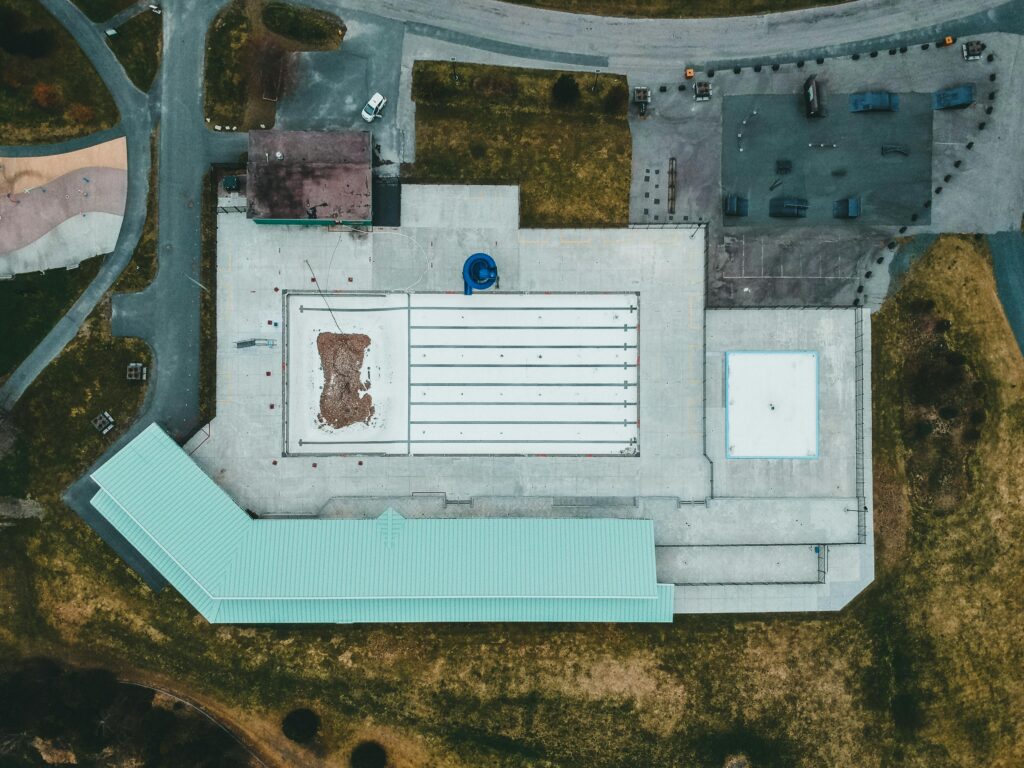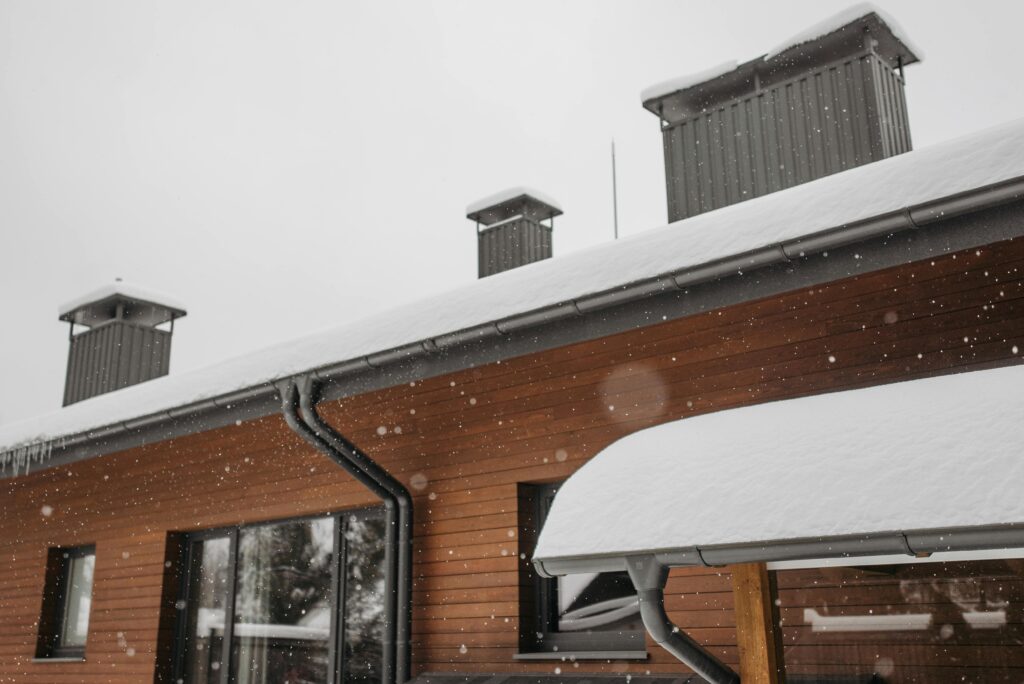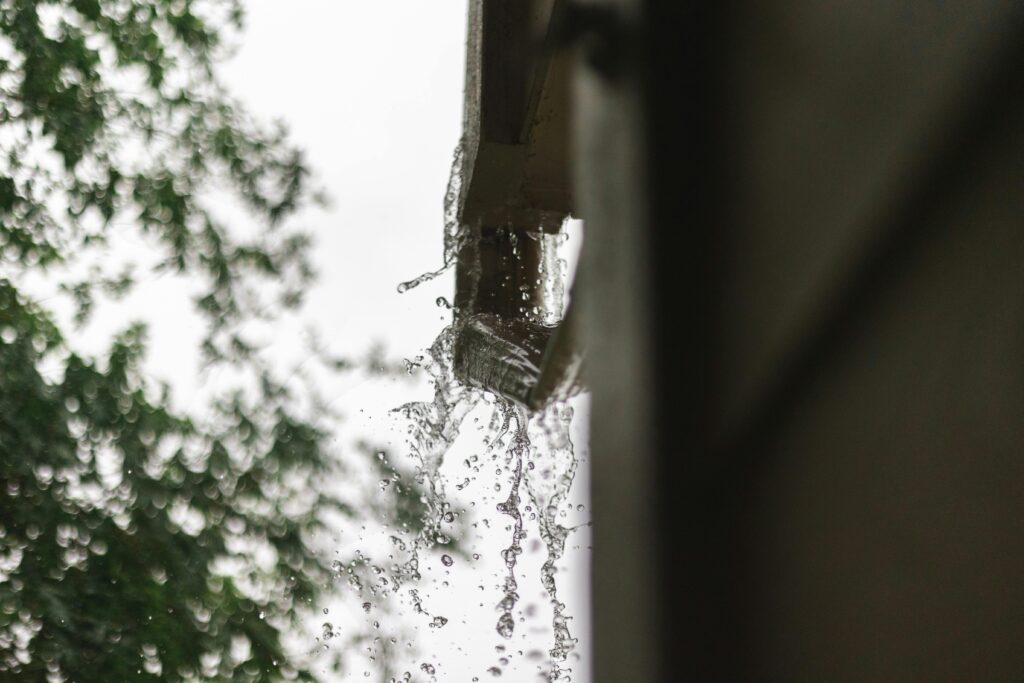When it’s time to replace your commercial roof, you have options for the material. Although commercial roofing systems come with unique challenges, the materials commonly used on commercial roofs help overcome these problems for a sound roofing system.
Here, we discuss the most common commercial roofing materials today, including single-ply membranes, asphalt-based options, and green roofing materials so you can make the best choice for your business.
Understanding Commercial Roofing Systems
Commercial roofs differ significantly from residential ones. They usually feature a flat or slightly sloped profile and can’t be seen from the ground. The materials used in commercial roofing systems are also different.
Most Popular Commercial Roofing Materials
Single-ply and asphalt-based materials are two of the most popular options for commercial roofing.
- Single-ply. These lightweight and energy-efficient materials include TPO, PVC, and EPDM, all of which come in different colors to suit your property, the most common being white, black, and gray.
- Asphalt-based. Built-up roofing (BUR) and modified bitumen are asphalt-based roofing materials that are traditionally black in color and cost-effective for commercial properties.
Click to Tweet
Single-Ply Commercial Roofing
Let’s take a closer look at the single-ply roofing materials mentioned above.
Thermoplastic Polyolefin (TPO)
TPO is one of the most popular commercial roofing materials. It’s lightweight, affordable, and energy efficient. It can also last up to 30 years with the proper care. TPO reflects the sun, which makes it a cool roofing system that can support your property’s energy needs.
Polyvinyl Chloride (PVC)
With excellent puncture resistance, PVC is also a great option for industrial roofs, as it’s more robust than PVC and can handle fire and chemicals better. Like TPO, it helps reflect sunlight, keeping your building cooler and reducing the risk of heat-related damage to your roof. PVC can last up to 20 years with proper maintenance.
Ethylene Propylene Diene Terpolymer (EPDM)
EPDM is a synthetic rubber roofing material that has more flexibility than TPO or PVC, allowing it to respond better to temperature changes. It can come in white or black, although white provides more energy benefits since it helps reflect the sun’s rays. EPDM typically lasts 15-20 years on commercial properties.
Click to Tweet
Asphalt-Based Commercial Roofing
Considering an asphalt-based roofing system? Here are the two most popular options for commercial properties.
Modified Bitumen Roofs
Modified bitumen is made by mixing asphalt with rubber, fiberglass, and other materials, depending on the manufacturer. These roofs provide excellent resistance against weather damage and temperature fluctuations. Modified bitumen can handle heavy foot traffic and last up to 20 years with the right care.
Built-Up Roofing (BUR)
BUR is another popular asphalt-based material made by layering asphalt with gravel and other materials to create a durable roofing system that, like modified bitumen, can handle heavy foot traffic well. BUR has excellent fire resistance but is heavy, so it may require reinforcing your roof structure. Built-up roofing can last up to 30 years for commercial properties.
Click to Tweet
Green and Solar Roofing Options
Roof technology has come a long way. Nowadays, innovative commercial roofing solutions are available that improve energy efficiency and even provide a maximum roof lifespan, allowing commercial property owners to make the most of their roofing investment.
Green roofs, for instance, are becoming increasingly popular in urban areas. These roofs have a layer of membrane that supports plant life. They help reduce heat by absorbing sunlight and providing insulation, thereby reducing energy costs. These roofs don’t just look pretty–they can last 40-50 years or even longer.
Solar power is another big trend. With solar panels, commercial properties can use their roofs to generate their own electricity while reducing reliance on fossil fuels. Solar panels can be installed with many different commercial roofing types, allowing all kinds of business owners to take advantage of solar.
Click to Tweet
The Importance of Insulation and Cover Boards in Commercial Roofing
Commercial roofs need to be tough. But they also have a softer side, and that’s where insulation and cover boards come into play. These essential components boost the performance of your roof while ensuring it lasts for a long time.
Insulation and cover boards are more than just protective layers. They help regulate indoor temperatures, which can lead to significant energy savings. Plus, with proper installation by an experienced roofing contractor, you improve fire resistance and enhance rooftop traffic protection too.
In commercial buildings, especially those with flat or low-slope roofs, effective insulation is critical for managing energy costs. Insulating materials can be used with various roofing systems like EPDM, TPO, and PVC to provide excellent thermal performance for commercial buildings.
Cover boards, on the other hand, protect this layer of insulation from physical damage due to foot traffic or harsh weather conditions, helping to maintain their efficiency over time.
Click to Tweet
FAQs About Commercial Roofing Materials
What materials are used on a commercial roof?
Commercial roofs use various materials like TPO, PVC, and EPDM for single-ply roofing. Other options include asphalt-based ones like modified bitumen and built-up systems, as well as green roofing systems.
What is the best roofing for commercial?
It depends on your specific building and preferences. For example, asphalt-based roofing tends to be better for heavy foot traffic and fire resistance, while single-ply membranes excel at energy efficiency and lightweight protection.
What is the most common material for commercial roofing?
EPDM is one of the most common commercial roofing materials, followed by TPO, modified bitumen, and built-up roofing.
Can you use metal for commercial roofing?
Yes. Metal is a great material for certain commercial roofing applications due to its durability, longevity, and performance.
Contact CDS Roofing Today
Choosing the right roofing material is imperative to protect your commercial property. Whether you need a brand-new roof installation or a roof replacement, CDS Roofing can help you choose the best material. With over 30 years of experience, our certified contractors are here to help–contact us for a consultation today.



